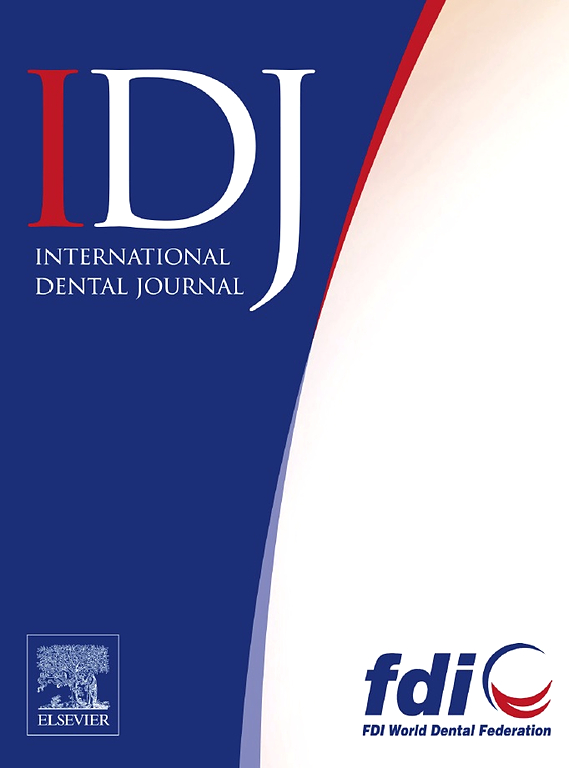Do 3D-Printed and Milled Denture Bases Differ in Microbial Activity and Adhesion? A Systematic Review and Meta-Analysis
IF 3.2
3区 医学
Q1 DENTISTRY, ORAL SURGERY & MEDICINE
引用次数: 0
Abstract
The increasing adoption of digital manufacturing in prosthodontics raises concerns about microbial metabolic activity and adhesion on denture bases fabricated via additive and subtractive methods. This systematic review aimed to compare microbial metabolic activity and microorganism adhesion between 3D-printed and milled complete denture bases. A systematic search of PubMed, Scopus, Web of Science, Embase, and the Cochrane Library was conducted up to December 2024. Studies were screened according to predefined eligibility criteria, and data were independently extracted by two reviewers. The standardized mean difference (SMD) was used to compare microbial metabolic activity and cell adhesion outcomes between groups. A random-effects model was applied for meta-analysis, and heterogeneity was assessed using Cochran's Q, I², and τ² indices. Publication bias was evaluated using funnel plots, Egger's test, and the Trim and Fill method. The Quality Assessment Tool for In Vitro Studies (QUIN) was used to assess the risk of bias. Twelve studies met the inclusion criteria. The meta-analysis revealed that microbial activity was significantly higher in 3D-printed compared to milled denture bases (SMD = 1.285, 95% CI: 0.810-1.760, P < .001). Similarly, the microbial cell count was significantly higher in the 3D-printed group (SMD = 1.050, 95% CI: 0.124-1.976, P = .026). Surface roughness was tested as a covariate in meta-regression and was not a significant predictor of microbial activity. 3D-printed denture bases exhibited higher microbial metabolic activity and adhesion than milled counterparts. However, the heterogeneity of studies and variations in fabrication parameters necessitate further research to optimize material selection and processing protocols.
3d打印和研磨的义齿基托在微生物活性和粘附性方面有区别吗?系统回顾和荟萃分析
数字制造在修复学中的日益普及引起了人们对微生物代谢活动和通过加法和减法制造的义齿基托的粘附性的关注。本系统综述旨在比较3d打印和磨铣全口义齿基托之间的微生物代谢活性和微生物粘附性。系统检索PubMed、Scopus、Web of Science、Embase和Cochrane Library,检索截止到2024年12月。研究根据预先确定的资格标准进行筛选,数据由两名审稿人独立提取。采用标准化平均差(SMD)比较各组间微生物代谢活性和细胞粘附结果。采用随机效应模型进行meta分析,并使用Cochran's Q、I²和τ²指数评估异质性。采用漏斗图、Egger检验和Trim and Fill法评估发表偏倚。采用体外研究质量评估工具(QUIN)评估偏倚风险。12项研究符合纳入标准。荟萃分析显示,3d打印的义齿基托的微生物活性明显高于研磨的义齿基托(SMD = 1.285, 95% CI: 0.810-1.760, P <;措施)。同样,3d打印组的微生物细胞计数显著高于3d打印组(SMD = 1.050, 95% CI: 0.124-1.976, P = 0.026)。表面粗糙度在meta回归中作为协变量进行了测试,并不是微生物活性的显著预测因子。3d打印的义齿基托比研磨的义齿基托具有更高的微生物代谢活性和粘附性。然而,研究的异质性和制造参数的变化需要进一步研究以优化材料选择和加工方案。
本文章由计算机程序翻译,如有差异,请以英文原文为准。
求助全文
约1分钟内获得全文
求助全文
来源期刊

International dental journal
医学-牙科与口腔外科
CiteScore
4.80
自引率
6.10%
发文量
159
审稿时长
63 days
期刊介绍:
The International Dental Journal features peer-reviewed, scientific articles relevant to international oral health issues, as well as practical, informative articles aimed at clinicians.
 求助内容:
求助内容: 应助结果提醒方式:
应助结果提醒方式:


